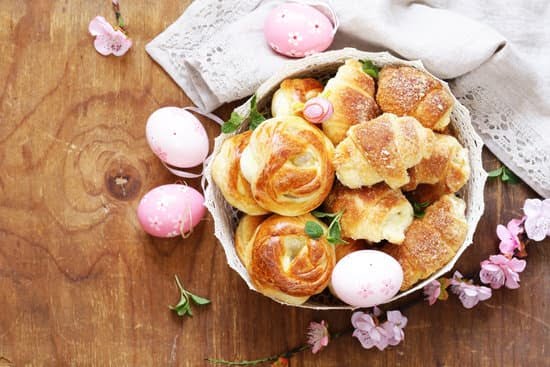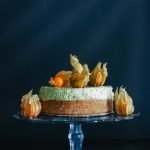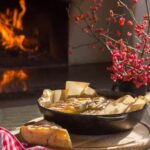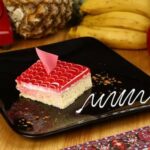Are you looking to add a personal touch to your next birthday celebration? If so, learning how to decorate a birthday cake at home can be a fun and rewarding experience. From choosing the right cake recipe to adding personal touches, there are many ways to create a stunning birthday cake that will impress your loved ones.
When it comes to decorating a birthday cake at home, the first step is choosing the right cake recipe. Whether you prefer a classic vanilla or chocolate cake, or something more unique like red velvet or carrot cake, it’s important to select a recipe that not only tastes delicious but also holds up well for decoration.
In this article, we will explore different cake recipes and their suitability for decoration, helping you find the perfect base for your creative design.
Once you have selected the perfect recipe, the next step is gathering the essential tools and supplies for cake decoration. From piping bags and tips to food coloring and fondant, having the right equipment is crucial for achieving professional-looking results. Additionally, we will provide tips on preparing the cake base, mastering basic frosting techniques, using fondant for a smooth finish, and creating intricate designs with piping and various tips.
We will also offer ideas for personalizing the cake with edible decorations and provide troubleshooting tips for common decorating mistakes. Whether you’re a beginner looking to learn the basics or an experienced decorator seeking new inspiration, this guide has something for everyone looking to elevate their baking skills.
Essential Tools and Supplies
| Tools | Supplies |
|---|---|
| Piping bags | Fondant |
| Piping tips (various sizes and designs) | Food coloring (gel or liquid) |
| Spatula or offset spatula | Edible decorations (sprinkles, edible glitter) |
| Cake turntable |
In addition to the items listed above, other basic kitchen tools such as a rolling pin, pastry brush, and sharp knife may also be useful depending on the specific decoration technique being used. It’s important to have these tools and supplies on hand before beginning the cake decorating process to ensure a smooth and enjoyable experience.
Furthermore, while some of these items such as piping bags and tips can be purchased at baking supply stores, others like food coloring and fondant can easily be made at home using simple recipes. This allows for greater flexibility in customizing the colors and flavors of the cake decorations to suit the birthday theme or personal preferences.
By having all the essential tools and supplies ready, anyone can learn how to decorate a birthday cake at home with ease and confidence. With practice, patience, and creativity, it’s possible to create beautiful customized cakes that are sure to impress any birthday celebrant.
Preparing the Cake Base
Baking the perfect cake is essential for successful cake decoration. When choosing a cake recipe, it’s important to consider the density and crumb structure of the cake. A sturdy and moist cake that holds its shape well is ideal for decorating. Popular choices include chocolate, vanilla, and red velvet cakes. It’s also important to consider allergies or dietary restrictions when selecting a recipe.
Once the cake batter is prepared, it should be evenly divided into greased and lined baking pans. To ensure even baking, it’s recommended to rotate the pans halfway through baking to promote uniform rising and browning. After baking, allow the cakes to cool completely before starting the decorating process.
Leveling the cake layers is crucial for creating a smooth decorating surface. A serrated knife or cake leveler can be used to carefully trim any uneven tops for a level surface. It’s also helpful to have a rotating turntable for easy access while decorating.
It’s important to note that practicing caution with sharp tools when leveling the cake is essential. Ensuring that the layers are completely cooled before attempting to level them will make this process easier and also reduce the risk of breakage or crumbling.
| Tool/Supply | Description |
|---|---|
| Serrated Knife | A long, narrow knife with a serrated edge used for trimming cake layers |
| Cake Leveler | A tool with an adjustable wire or blade designed specifically for leveling cake layers |
| Turntable | A rotating platform that makes it easier to frost and decorate cakes evenly |
Basic Frosting Techniques
Decorating a birthday cake at home can be a fun and rewarding experience, especially when you have the right techniques and tools at your disposal. One of the first steps in the cake decorating process is applying a base coat of frosting to create a smooth canvas for your design. In this section, we will discuss step-by-step instructions on how to achieve this basic frosting technique for a professional-looking finish.
Choose the Right Frosting
The first step in applying a base coat of frosting is selecting the right type of frosting for your cake. Buttercream frosting is a popular choice due to its smooth texture and ability to hold its shape for decorative piping. Alternatively, cream cheese frosting offers a tangy flavor that complements certain cake flavors, while ganache provides a rich and glossy finish. Consider the flavor profile of your cake and choose a frosting that will complement it well.
Prepare the Cake Surface
Before applying the base coat of frosting, it’s important to prepare the cake surface by leveling it with a serrated knife or cake leveler. This will ensure that your cake has an even surface for frosting application and prevent any lopsidedness in the final design. Additionally, consider crumb-coating the cake by applying a thin layer of frosting to seal in any loose crumbs, which will result in a cleaner finish when applying the final coat of frosting.
Apply and Smooth the Frosting
Once your cake is prepped and ready, it’s time to apply the base coat of frosting. Using an offset spatula or bench scraper, spread a generous amount of frosting onto the top of the cake, then gradually work your way down to cover the sides.
Use a rotating turntable if available, as it allows for smoother and more even application of the frosting. After applying the initial layer, use long strokes with your spatula or scraper to smooth out any excess frosting and create an even layer across the entire surface of the cake.
Whether you’re creating a simple frosted design or incorporating intricate decorations on top, mastering basic frosting techniques is crucial for achieving professional-looking results when decorating a birthday cake at home. By following these step-by-step instructions, you can ensure that your base coat of frosting sets the stage for stunning and personalized designs on your homemade masterpiece.
Decorating With Fondant
Fondant is a versatile and popular choice for creating a smooth and professional-looking finish on birthday cakes. If you’re wondering how to decorate a birthday cake at home with fondant, look no further. Fondant can be rolled out and draped over the cake to create a seamless appearance, making it perfect for achieving clean lines and adding intricate details.
Before working with fondant, it’s important to ensure that your cake is properly prepared. Start by applying a thin layer of buttercream frosting to the cake to help the fondant adhere. Additionally, make sure the surface of the cake is smooth and free from any crumbs or imperfections. Once your preparation is complete, roll out the fondant to your desired thickness on a clean, dry surface dusted with powdered sugar to prevent sticking.
To lift and drape the rolled-out fondant over the cake, carefully lift one edge using a rolling pin and gently lay it over the top of the cake. Use your hands to smooth out any air bubbles or wrinkles, starting from the top and working your way down the sides. Trim off any excess fondant using a sharp knife or pizza cutter, and gently press the edges against the base of the cake for a clean finish.
After covering your cake with fondant, you can further enhance its appearance by adding decorations such as ribbons, bows, flowers, or even hand-painted designs. With some practice and patience, using fondant can elevate your homemade birthday cakes to a professional level.
Piping and Decorating Techniques
Decorating a birthday cake with intricate designs and borders is a skill that can elevate the look of any homemade cake. With the right tools and techniques, you can create professional-looking decorations that will impress your friends and family. In this section, we will explore the use of piping bags and various tips to create beautiful designs and borders for your cake.
Choosing the Right Piping Tip
When it comes to piping bags, there are a wide variety of tips available, each serving a different purpose. From round tips for creating dots and outlines to star tips for creating rosettes and shells, it’s important to choose the right tip for the design you have in mind. Consider experimenting with different tips to see which ones work best for the specific decorations you want to create on your cake.
Techniques for Piping
Before you start decorating your cake, it’s essential to practice your piping techniques on a piece of parchment paper or wax paper. This will help you get comfortable with holding the piping bag at the right angle and applying consistent pressure to create smooth lines and shapes. Some popular piping techniques include writing text, creating ruffles, making flowers, and outlining borders.
Creating Intricate Designs
Once you’ve mastered the basic piping techniques, you can move on to creating intricate designs on your cake. Consider using multiple colors of frosting in one piping bag to achieve a multi-colored effect or layering different designs on top of each other for added dimension. Don’t be afraid to get creative with your designs – whether it’s writing a message in cursive or piping delicate lace patterns around the edges of the cake.
By mastering these piping and decorating techniques, you’ll be able to take your homemade birthday cakes to the next level. With practice and patience, you can create stunning designs and borders that will make your cakes stand out at any celebration.
Adding Personal Touches
When it comes to decorating a birthday cake at home, adding personal touches can truly make the cake special and unique. One of the simplest ways to personalize a cake is by using edible decorations such as sprinkles, edible glitter, and custom toppers.
Sprinkles come in a variety of shapes, colors, and sizes, making them a fun and easy way to add a pop of color and texture to the cake. Whether you choose traditional rainbow sprinkles or themed varieties like stars or hearts, they are sure to bring a festive touch to your creation.
Another popular option for adding flair to a birthday cake is edible glitter. This shimmering powder adds a touch of sparkle and elegance to the cake, perfect for celebratory occasions. Edible glitter is available in an array of colors and can be dusted over the entire surface of the cake or used sparingly for a more subtle effect.
For those looking for a truly personalized touch, custom cake toppers are an excellent choice. From initials and age numbers to themed figurines and characters, there are endless possibilities for creating a custom cake topper that reflects the recipient’s interests or hobbies. Many bakeries and online retailers offer customizable options for creating unique cake toppers that will truly make the birthday cake stand out.
Incorporating these edible decorations into your homemade birthday cake can elevate its appearance from basic to professional-looking with little effort. By combining these personal touches with other decoration techniques such as fondant work and piping designs, you can create a stunning centerpiece for any birthday celebration.
Troubleshooting and Tips
In conclusion, decorating a birthday cake at home can be a fun and rewarding experience with the right guidance and tools. By following the steps outlined in this article, you can create a beautifully decorated cake that will impress your friends and family. From choosing the right cake recipe to adding personalized touches, each step plays a crucial role in achieving professional-looking results.
One of the most important aspects of successful cake decoration is having the essential tools and supplies on hand. Investing in quality piping bags, tips, food coloring, and fondant can make a significant difference in the finished product. Additionally, understanding basic frosting techniques and how to troubleshoot common decorating mistakes will ensure that your cake turns out as desired.
Ultimately, by following these instructions on how to decorate a birthday cake at home, you can unleash your creativity and showcase your baking skills. Whether it’s for a loved one’s special day or simply as a creative outlet, taking the time to decorate a homemade cake can be both satisfying and enjoyable. So gather your supplies, choose your favorite cake recipe, and get ready to create a masterpiece that will be enjoyed by all.
Frequently Asked Questions
How Do You Make a Plain Cake Look Fancy?
A plain cake can be made fancy by adding decorative elements such as fresh fruit, edible flowers, or a dusting of powdered sugar. You can also add a drizzle of chocolate or caramel sauce for an elegant touch.
How Can I Decorate My Cake at Home?
Decorating a cake at home can be as simple as using a piping bag to create different designs with frosting. You can also use cookie cutters to create fun shapes out of fondant or edible decorations. Don’t forget to add colorful sprinkles or edible glitter for some extra flair!
How Do You Decorate a Cake Simply?
Decorating a cake simply can be done by using a classic frosting technique like the smooth finish or rustic swirls. Adding minimal yet strategic toppings like fresh berries, chocolate shavings, or chopped nuts can also enhance the appearance without being too overwhelming.

Welcome to our cake decorating blog! My name is Destiny Flores, and I am the proud owner of a cake decorating business named Cake Karma. Our mission is to provide delicious, beautiful cakes for all occasions. We specialize in creating custom cakes that are tailored specifically to each customer’s individual needs and tastes.





